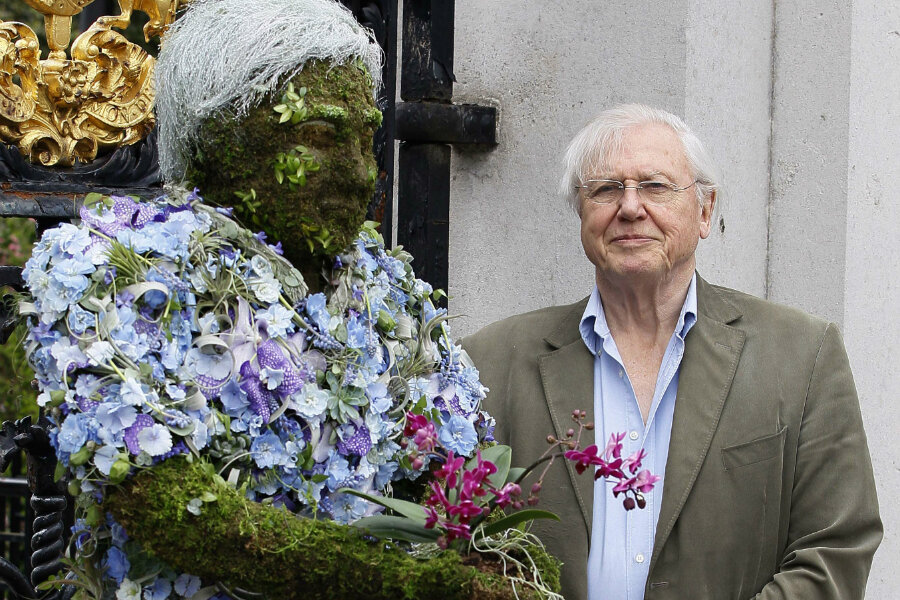Fossilized shrimp joins band of species named for naturalist David Attenborough
Loading...
An ancient, fossilized crustacean buried in 430-million-year-old volcanic rock has a brand-new namesake: Sir David Attenborough.
The tiny creature, which is less than a centimeter in length, has been named Cascolus ravitis by researchers from Oxford, Leicester, Yale, and Imperial College London. "Cascolus" is a Latin rendering of the Old English equivalent to the name "Attenborough," and "ravitis" is derived in part from the Roman name for Leicester, a reference to the University of Leicester in England, where Sir David grew up. His father worked on the campus at the time as an administrator.
"The biggest compliment that a biologist or paleontologist can pay to another one is to name a fossil in his honor and I take this as a very great compliment," Sir David told the BBC.
Sir David is a famous naturalist and former BBC executive known for his work on the BBC's famed "Life" and "Planet Earth" series, both of which broke new ground in nature documentary filmmaking. His stature in the field has given him many unusual namesakes over the years, including a long-beaked echidna from New Guinea named Zaglossus attenboroughi, a wildflower named the Attenborough Hawkweed, and even a polar research vessel named the RRS Sir David Attenborough (despite an online poll that wanted to name the ship "Boaty McBoatface").
"It is wonderful to be able to name a remarkable fossil from the United Kingdom in honor of Sir David, who has done so much to promote the conservation of the Earth's biodiversity," said Derek Briggs, a Yale professor of geology and geophysics and a co-author of a paper on the crustacean.
The C. ravitis specimen was preserved when an underwater volcano covered the creature in ash, freezing it in time "like an underwater Pompeii," said Dr. Briggs.
"Our analysis suggests that it is an early representative of the line leading ultimately to modern shrimps, lobsters and crabs," he told the Los Angeles Times.
The fossil, unearthed in Herefordshire, England, was very well-preserved but difficult to analyze through conventional means since it was buried in rock. Therefore, researchers decided to create a full, virtual 3-D model of the ancient creature. While this would allow researchers all over the world to get a close, interactive view of the crustacean, the creation of the model came at a price; the physical fossil had to be destroyed in the process.
"We ground the fossil away in very thin increments – some 50 for every millimeter – imaging the details at each stage (which are like slices through the specimen) and then combining the images into a three-dimensional reconstruction," Briggs explained to the L.A. Times. "So the specimen we treated in this way no longer exists but survives as images and a reconstruction that can be provided to any researcher."
C. ravitis was tiny, just 8.9 millimeters long, with its widest point (around its head shield) a mere 1.3 millimeters in length. It had a segmented body and two-branched limbs, both typical features of modern crustaceans. The fossil also includes a number of petal-like appendages, which may have helped C. ravitis swim through the ocean, take in oxygen from the surrounding water, or both.
"Their relatively large surface area would presumably facilitate efficient oxygen uptake," the study authors wrote.
This article contains material from the Associated Press.








